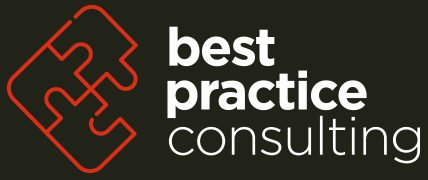We’ve all heard of ‘high performing teams’. But what does a high performing team actually look like? Do they really make a difference? And if they do, how do you ‘make’ one?
A high performing team can be defined as a group of people with specific roles and complementary talents and skills, who are committed to a common purpose and who collaborate to produce superior results.
This might sound idealistic, but high performing teams are not as rare as you might think. Most of us have actually led or been a member of a high performing team at one time or another in our careers. Think back. If you’ve ever been part of a project team or functional unit where team members all got along, had the right skills and all worked hard to pull together the project and achieve top results for the organisation, then you’ve experienced a high performing team.
What’s so good about high performing teams?
The link between teams and positive organisational performance is undeniable. And there’s plenty of evidence to support it.
For instance, Cohen and Ledford (1994), examined more than eighty self-managing teams at an American telecommunications company and found that self- managing teams had significantly better job performance and higher employee job satisfaction than traditional working groups or departments.
Batt (2004) showed that self- managed teams were associated with significantly higher levels of satisfaction for workers and were effective in improving objective performance measures.
In a wider European study, Benders et al. (2001) also found a positive effect of teams for reducing employee absenteeism rates and improving organisational performance.
Furthermore, a review of survey based research on teamwork and performance over the last decade concluded that the great majority of studies had found teams had positive effects on operational measures of organisational performance (Delarue et al.2008).
A central argument for linking teamwork to higher productivity is that it gives employees a sense of empowerment, by increasing the control they can exercise over their immediate work environment (Goodman et al. 1988; Harley 1999). Ultimately, workers with higher control over their jobs are likely to feel more committed to their organisations and more satisfied with their jobs. As a result, they will be more willing to deploy discretionary effort, thereby enhancing organisational performance (Cohen et al. 1996; Dunphy and Bryant 1996; Pil and MacDuffie 1996).
The benefits are clear, but how do you ‘make’ a high performing team?
Creating a high performing team does take some work. For some leaders and managers, it can be a particularly difficult task; they may be very organised, technically competent, and masters at navigating their way through complex organisational politics, but they may not be very good people managers and not very effective at building a team. But, this doesn’t mean it can’t be done.
In our experience, there are four important things for leaders and managers to consider if they want to create a great team.
1. Foster a teamwork culture
In every case that has been studied at the Europe-based Centre for Organisational Research, teams that 'click' always have a leader who creates an environment and establishes values that are conducive to high performance. Dubrin, Dalgleish and Miller (2011) believe there are a number of ways leaders can do this.
- Develop a norm of teamwork. Promote the attitude among your employees that working together effectively is an expected standard of conduct.
- Display a consensus leadership style. Whenever you can, demonstrate to employees that you value their input on important decisions. Consensus decision-making also leads to an exchange of ideas within the group including supporting and refining eachother’s suggestions which is proven to achieve better outcomes.
- Be a positive teamwork model. Practice what you preach! Seek out opportunities to work as a team member with your employees and with other team leaders. Interact extensively with your fellow team members and when appropriate, be as candid as you can about ideas and attitudes relevant to the group’s work. A leader’s self-disclosure fosters teamwork because it leads to shared perceptions and concerns.
If you are in charge of a work group, it’s worth remembering that teams are definitely forms of work groups, but not all work groups are teams. The table below will help you to distinguish between a work group and a team.
|
Work Groups |
Teams |
|
Individual accountability |
Individual and mutual accountability |
|
Come together to share information and perspectives |
Frequently come together for discussion, decision making, problem solving, and planning. |
|
Focus on individual goals |
Focus on team goals |
|
Produce individual work products |
Produce collective work products |
|
Define individual roles, responsibilities, and tasks |
Define individual roles, responsibilities, and tasks to help team do its work; often share and rotate them |
|
Concern with one's own outcome and challenges |
Concern with outcomes of everyone and challenges the team faces |
|
Purpose, goals, approach to work shaped by manager |
Purpose, goals, approach to work shaped by team leader with team members |
Source: http://www.dummies.com/how-to/content/differences-between-work-groups-and-teams.html
3. Understand the ‘life cycle’ of teams
Teams that have not worked together before usually go through several stages of team development. Bruce Tuckman’s enduring four-stage model (forming, storming, norming and performing) is a great starting point for understanding the development life cycle of teams.
The four original developmental stages are:
- Forming: Team members get to know each other and try to comprehend their task. This stage is characterised by lack of clarity and unclear roles and responsibilities. The team leader must take an active role setting the team's purpose, boundaries and structure.
- Conforming: Team members fall into an easy consensus in order to feel as though they are really working together.
- Storming: The boundaries set by the leader are tested as team members jockey for key positions or promote their own agendas. Frustrations may emerge over differences that have been surpressed. Factions often form and there may be power struggles. The team leader needs to adjudicate disputes and deal with challenges, reinforcing the team’s boundaries and structure. Clear and effective communication is crucial during this stage.
- Performing: The good team dynamics start to pay off as the team produces high volumes of quality work. There is a focus on over-achieving goals, and the team is able to function without instruction from the leader, who now takes on more of an ‘overseeing’ role.
Understanding these stages is useful because it will help you to identify where your team is, where it needs to be and most importantly, what you need to do as a leader or manager to support them.
Your role as leader needs to change as the team develops. For example, the leader’s need for conflict resolution skills increases as the team develops towards the performing stage. Once the team reaches the performing stage, the leader assumes the role of ‘boundary spanner’ ensuring that team members can get on with tasks without external interference. It’s also worth bearing in mind that the arrival of a new team member or a team restructure can cause an established team to revert back to the ‘forming’ stage, if only briefly.
Tuckman’s original model has been expanded over time. Other proposed team stages you might recognise in teams you lead include:
- Norming (comes after storming): This is where confidence and trust within the team starts to emerge, with the team working more cohesively as an integrated unit. The team roles and expectations of each other are bedded down, while the team leader is able to take on a less directive role.
- Reforming (comes after norming): The team checks the new norms and behavioural patterns and reorients itself to the new standards in practice and corrects any problems. The maturity of the team dynamic is able to resolve problems that arise.
- Mourning (comes after performing): This is the break-up of the group, usually when the task is completed successfully. Team members move on, after being closely bound for a period of time. This can be an emotional time, with some team members experiencing feelings of loss. When group members are involved in new projects, they may try to recreate the old project in a new form, saying things like ‘we always did it this way in my old project team/company’.
So, you’ve established the right culture, understand what a true team is and have a good feel for the stages of teams. Now what?
Sometimes a leader’s inspiring personality alone can foster teamwork. But more often than not, leaders need to encourage teamwork by proactively demonstrating certain attitudes and behaviours and acting in certain ways.
The most significant behaviours and actions consistently demonstrated by leaders of high performing teams are:
- Defining clear goals or a vision of the future for the team that aligns with overall organisational aims;
- Creating blueprints for action to achieve those goals and clarifying priorities on a regular basis;
- Using language to build trust, encourage forward thinking and create energy within the team;
- Getting the right people involved;
- Emphasising pride in being outstanding. Helping the group to realise why it should be proud of its accomplishments builds team spirit.
- Establish urgency and relevance. The more urgent and relevant the rationale for the team, the more likely it is that the team will achieve its potential.
- Promote self-awareness in the team, including an understanding that people contribute and work differently. Increased self-awareness amongst team members can result in a greater understanding of their own behaviours and the impact of that on others. There are many tools available to help with this process including the Executive Leadershop Profile (ELP), DiSC, Team Management Profile (TMP) and Hogan assessments.
- Keeping channels of communication open. Knowledge and information should be shared on all levels; and
- Empowering the team to make decisions and self-managing. This encourages members to take ownership of the work and fosters a deeper sense of commitment to achieving project goals. Just remember, for empowerment to work, team members must have the appropriate skills, job knowledge and motivation and be ready accept greater responsibility.
Other things leaders can consider to improve team performance include:
- Team recognition or rewards. Giving rewards for group accomplishment reinforces teamwork because people receive rewards for what they have achieved collaboratively. Examples could include certificates or recognition at the broader organisational level in newsletters or all-staff messages.
- Initiate rituals and ceremonies. This enhances team spirit and encourages team members to bond. For example, send the team on a retreat to further develop their mission or goals or organise a team dinner when milestones are reached.
So there you have it. The anatomy, as we see it, of a high performing team and some advice on how you can create one. We wish you luck on your journey as a leader of great teams and achieving your organisational goals!
We provide DiSC assessments and DiSC training for teams. To learn more about DiSC and whether DiSC team building is right for your team, contact us today.
If you want to re-used this article in part or whole, we are happy for you to do that. All we ask is that you reference us either within the article or in the footnotes, with a link that points back to our article.


